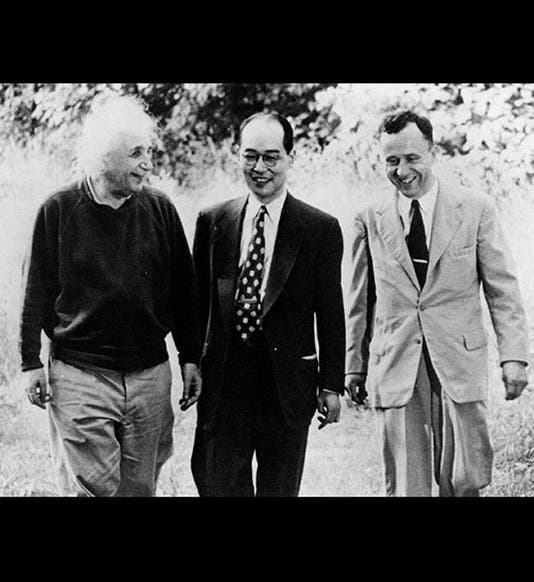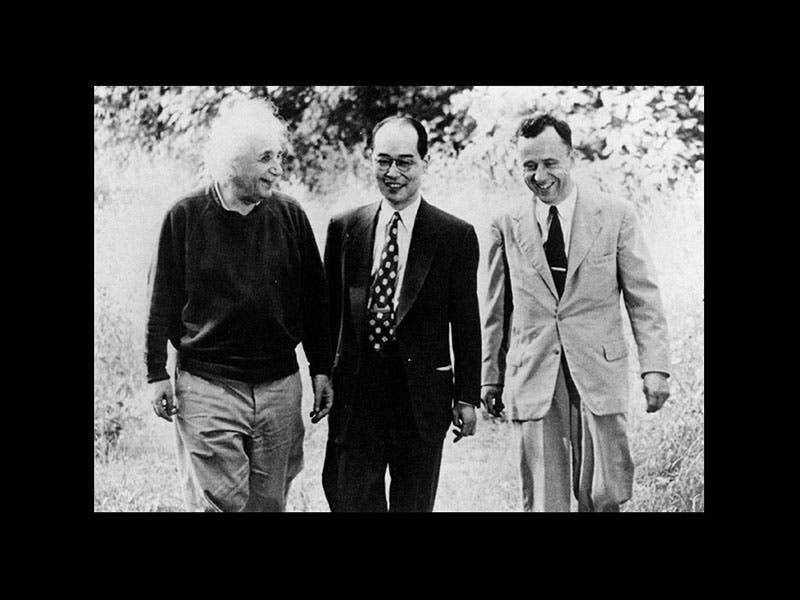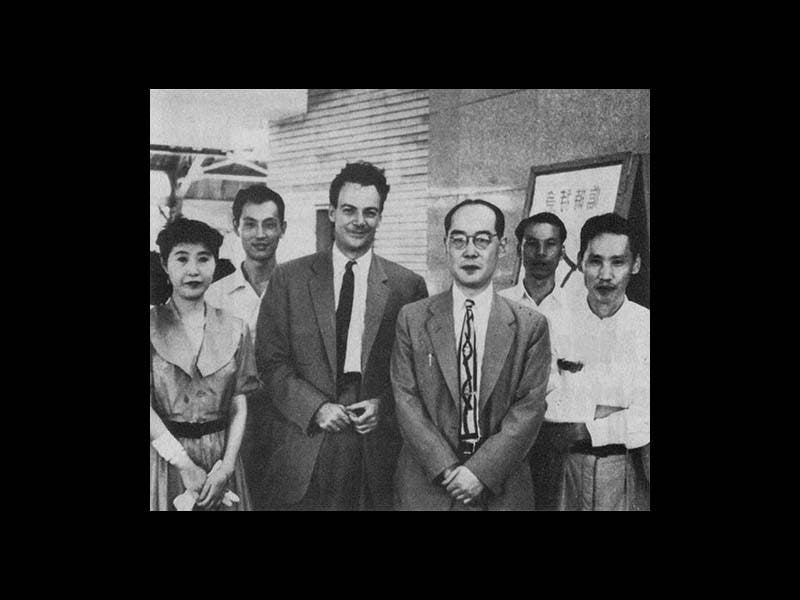Scientist of the Day - Hideki Yukawa
Hideki Yukawa, a Japanese physicist, was born Jan. 23, 1907. In 1935, Yukawa proposed the existence of a new kind of particle, the meson, in order to explain how protons and neutrons in the nucleus interact. The proton had been discovered in 1919, and the neutron only in 1932. It was clear that nuclei contain both protons and neutrons, but it was not at all evident what held the nuclear particles together. Yukawa suggested that nucleons are bound together by the exchange of an intermediary particle, the proposed meson. The first meson was discovered the next year, by Carl Anderson (who had discovered the neutron four years earlier), in a study of cosmic rays, but the new particle, dubbed the mu meson, or muon, although real enough, was not the right sort of meson to mediate the nuclear force, which would come to be called the "strong force" or “strong interaction”. So Yukawa set to work trying to work out the meson universe and the nature of the strong force. It turned out that only one kind of meson, the pi meson, was the carrier of the strong force, and the pi meson, or pion, was discovered in cosmic rays in 1947 and then produced in Berkeley's cyclotron in 1948. It was indeed the long-sought carrier of the strong interaction. For his work on mesons, Yukawa received the Nobel Prize for Physics in 1949.
When it was realized in the 1960s that neutrons, protons, and mesons are not elementary particles but comprised of quarks, it was determined that a meson consists of a quark and an antiquark, held together by the strong interaction. The pion is about 2/3 the size of a proton, but it is highly unstable, and is not found in nature except as the byproduct of high-energy interactions between protons, neutrons, and other mesons, such as when cosmic rays strike particles in the earth's atmosphere. It plays no role whatsoever in radioactive decay.
Yukawa became professor of physics at Columbia University in 1949 and was an active member of the physics community until his death in 1981. He is seen above with Richard Feynman, who visited Yukawa in Tokyo (third image), and on a walk with Albert Einstein and John Wheeler at the Institute for Advanced Studies in Princeton (first image), as well as on his own at the blackboard (second image).
Dr. William B. Ashworth, Jr., Consultant for the History of Science, Linda Hall Library and Associate Professor, Department of History, University of Missouri-Kansas City. Comments or corrections are welcome; please direct to ashworthw@umkc.edu.









